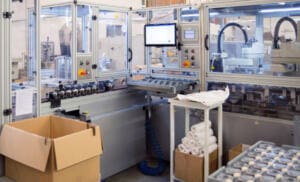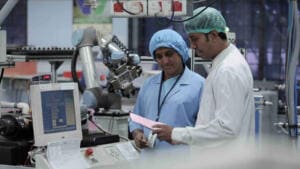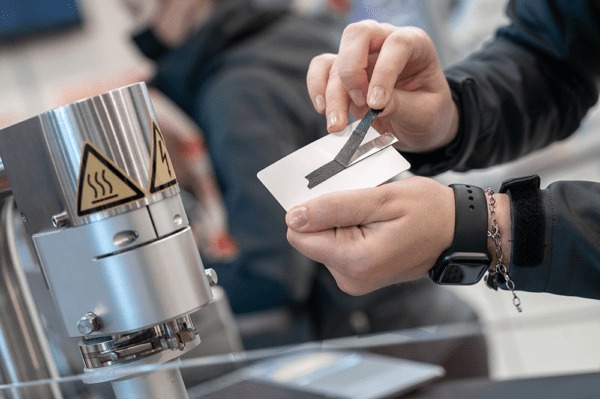
5 Factors that Influence the Cost of Automating Medical Device Manufacturing
There are many major benefits for automating within the medical device industry, including speed, cleanliness, but more importantly, having control of the process. In this highly regulated sector, which factors will influence costs, and how can these costs be minimised? SP Automation & Robotics explain in this blog article.
Within the medical device industry, automation has, for a long time, played a major part in manufacturing lines across the globe. The potential for automating is ever increasing with industry 4.0, helping to drive new innovative technologies within this sector which also includes machine learning and artificial intelligence.
The medical device sector, in particular, requires a high level of control within the manufacturing processes. Complete control and recording of the process from start to finish are essential, with serialisation playing a major part in quality control.
There are many major benefits for automating within the medical device industry, including speed, cleanliness, but more importantly, having control of the process. The medical device industry requires highly skilled staff to ensure processes are maintained and are in line with stringent procedures, and therefore the machines that replace these operations also have to take on this close control.
Cost Influencers
This highly regulated industry requires it to follow stringent processes. As a result, there are many factors that will influence the costs, some of which are unavoidable, but with good strategic planning, these costs can be minimised. The following points are just some of the influencers which need to be considered when manufacturing medical devices.
1. Consider Automation at the Design Stage
A major factor in ensuring that a process can be controlled for the manufacturing and automated assembly of medical devices is to bring together the device manufacturer and a machine builder as early as possible. In today’s demanding world, medical devices don’t just need to function correctly; they are also required to look “correct” from a marketing and end-user point of view.
Advancements in design and manufacturing processes bring with it the ability to develop more complex and indeed user-friendly devices. The downside of this is that many of these devices haven’t considered the process of designing for automation. Engagement between the device owner and an automation company is a crucial partnership to help design devices with automation in mind.
The ideal scenario would be to have a device or product engineer to engage with an automation machine builder to discuss the automation process and design the device to suit. This should also take into account the various stages of automation, from clinical trials to a full production automated system. The potential for automating should be realised as early in the design process as possible.
2. Efficiency and Quality Gains
In general terms, some of the main drivers behind automating are to ensure you have the highest quality of the product produced, and as quickly as possible. In terms of quality, this can be realised by incorporating vision inspection systems, airflow tests and so on. These inspections systems and the methodology behind them will more than likely have been born out of proof of concept (POC) trials. Efficiency comes down to both the quality of the machine that’s processing the device and the quality of the product itself. The product or device in relation to both the manufactured component parts as well as the design must be of the highest quality to ensure any automation and robotics technology solution can repeatably process and assemble devices.
By understanding the overall requirements and end goals at the start of the project can also help in reducing costs. The perception that automation has to be fixed and not flexible doesn’t have to be the case. Knowing the overall requirements at the start of the project will help derive the final solution. It may not be possible to fully design the complete automated solution in parallel with the device design, and some of the processes may require proof of concept (POC) to help gain knowledge of the device build process; therefore this stage may help mould the final solution and what it may look like.
3. The Environment
Medical devices are generally manufactured in cleanrooms. Depending on the type of device, and whether or not it comes into contact with the actual drug or dosage, will dictate the level and type of cleanroom where the manufacturing can happen. There are several classes of cleanroom, and in simple terms the lower the ISO Class is the cleaner the environment will be as shown in ISO 14644-1:2015. The cleaner the cleanroom, the more costly the environment will be to operate. This also goes for the machinery inside these areas, as specialised components within the machine will have to meet with the cleanroom requirements to ensure no particulates are added to the environment that would affect the class of cleanroom or the integrity of the device.
4. Medical Device Packaging
The manufacturing process also has to take packaging into account. In general terms this falls into two main categories, being primary and secondary. The primary packaging will be any packaging such as vials, screw tops, seals and closure liners that will or may come into contact with dosage or a part of the device that may be inserted into a patient. Secondary packaging would be anything outside and away from the device or dosage. If we put this into simple terms, a pack of tablets would follow this route with the sealed blister packs and drugs coming from primary and the outside sleeve or carton processed in another area. All aspects of the manufacturing environment have to go through rigorous validation procedures to ensure they meet the required criteria.
5. Skilled Workers
The medical device industry has always required highly skilled workers due to the rigid procedures and regulatory compliance required. Automation will always but unjustifiably, be seen to simply remove jobs. As manufacturing systems continue to develop and automation becomes a given and a must-have, this perception will change. As in all industries that are automating, these skilled workers are becoming even more skilled, by having to change their job roles and functions and upskill to allow them to work with, and alongside the automated processes. This, in turn, can raise labour costs, which will presumably be offset by the higher output and quality of devices produced by the automation. Amongst many of the benefits that automation brings to manufacturing in the medical device industry, the removal of as much human intervention, especially at the primary stage helps minimise the risk of human contamination.
Conclusion
In conclusion, the benefits of automation in the medical device industry are enormous and are not just limited to quality and output volumes. As can be seen from the above, there are many areas that influence the costs of automating in the medical device industry, but many of these costs can be reduced by good design and planning at the start of the project to remove unnecessary steps or expensive processes. Automating will ultimately reduce the need for manual labour, which in turn will provide higher volume outputs, improved quality and ultimately a lower device cost.
For more news, blogs and videos from SP Automation & Robotics, visit the company website.
SP Automation & Robotics
01382 880088
Website








